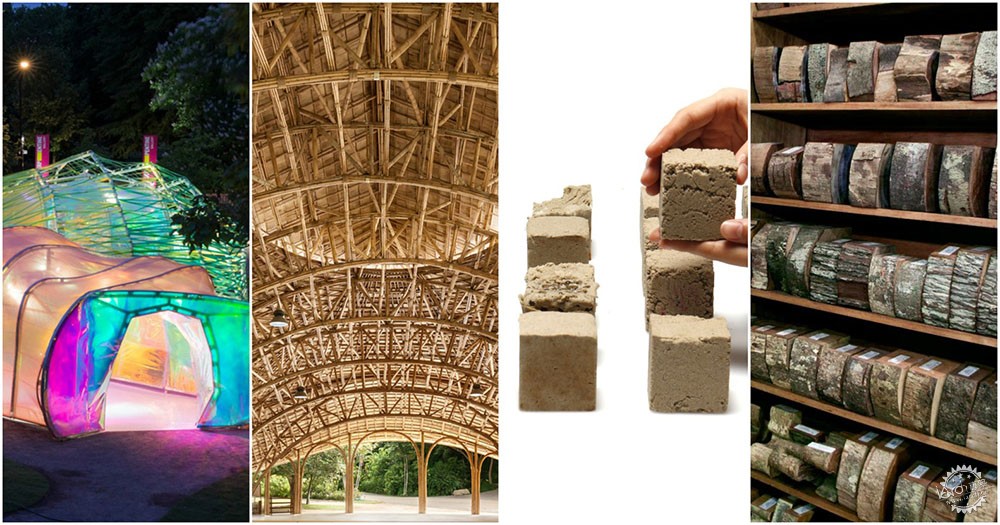
建筑师需要了解的8种可降解材料
8 Biodegradable Materials the Construction Industry Needs to Know About
由专筑网李韧,曹逸希编译
在建筑设计中,我们常常着迷于创新,因此我们常常忽视在建筑全寿命周期结束时,这些建筑会产生什么改变与影响。我们也许希望自己设计的建筑能够永久流传,但是现实却并非如此,那么这些建筑拆除之后的废弃物都流向何方呢?
其实,建筑垃圾与大多数不可回收的废物一样,垃圾填埋场是它们的最终归宿,但是长此以来,可用于垃圾填埋的土地越来越少,因此我们必须找到另一种替代方式。在英国,每年产生的建筑废物大约有7000万吨到1.05亿吨,卡迪夫大学的一项研究显示,其中只有大约20%的建筑垃圾可通过生物降解。因此,最好的方法也许是通过设计的方式及材料的巧妙运用,最大限度地降低材料的浪费,从而为建筑的全寿命周期做出贡献。
In architecture we are so caught up in creating something new, we often forget about what happens at the end of a building’s life cycle—the unfortunate, inevitable demolition. We may want our buildings to be timeless and live on forever, but the harsh reality is that they do not, so where is all the waste expected to go?
As with most non-recyclable waste, it ends up in the landfill and, as the land required for landfill becomes an increasingly scarce resource, we must find an alternative solution. Each year in the UK alone, 70–105 million tonnes of waste is created from demolishing buildings, and only 20% of that is biodegradable according to a study by Cardiff University. With clever design and a better awareness of the biodegradable materials available in construction, it’s up to us as architects to make the right decisions for the entirety of a building’s lifetime.
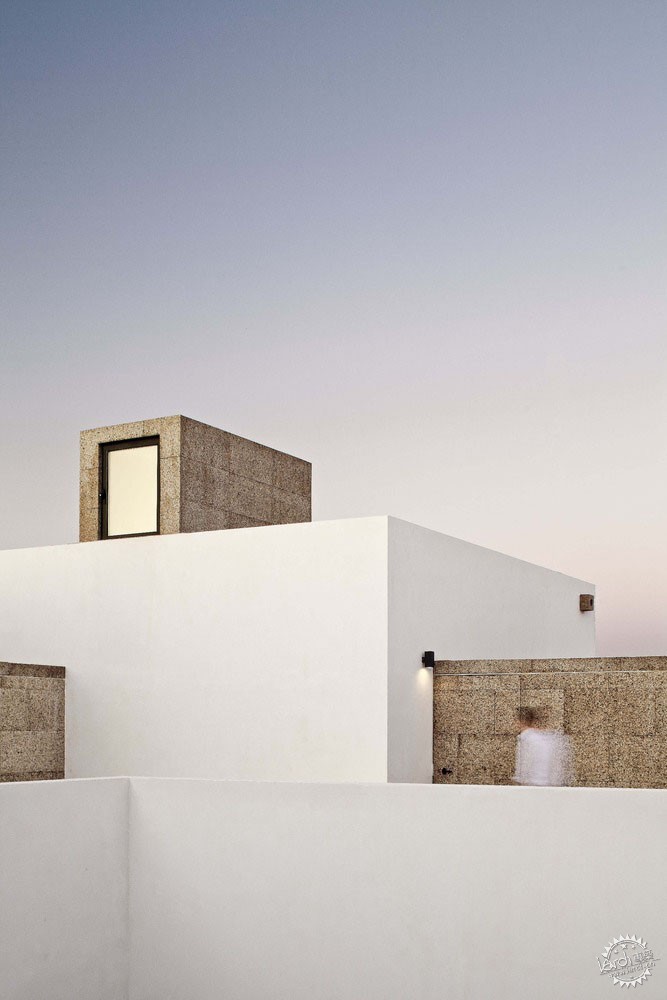
© Adria Goula
软木
软木材料较为容易降解,因此我们可以充分利用其这一优点。软木材料的产生就来自于再生过程,所以对其进行利用并不会对林地造成太多影响,因为在几十年之后,它又能得以再生。另外,软木材料还有许多特性,例如阻燃、隔音、防水等等,这种材料不仅适用于室内空间,它也同样适用于室外场所。
Cork
Cork is something of a superfood of construction materials, so much so that we've written a whole feature on it. The harvesting of cork is a completely renewable process that causes no harm to the tree and naturally regrows after ten years. It also boasts many desirable properties as a fire retardant, acoustic insulator and is extremely waterproof. Its adaptive qualities have seen it being used both for internal and external purposes.
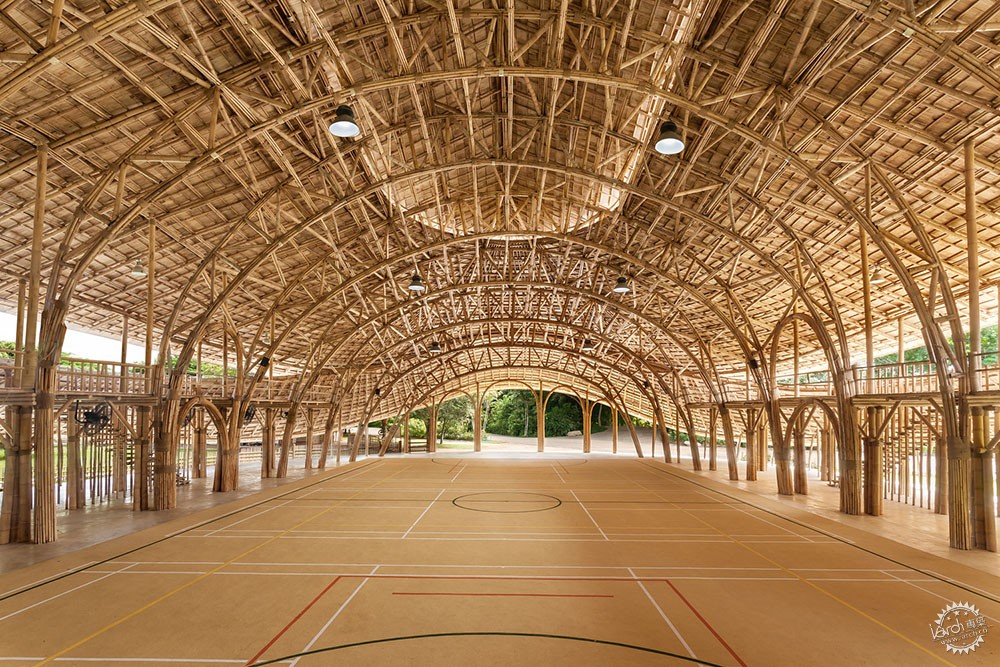
© Alberto Cosi
竹子
这种材料在近年来大热,由于其独特的美学特征和可持续性,竹制项目常常广为流传。如果你想知道其流行原因,那也许是其生长速度,竹子能够在一天内生长4英寸(约10厘米),并且能够再生,甚至其还拥有堪比钢铁的刚度。
Bamboo
Perhaps one of the biggest architectural crazes within the last few years, countless bamboo projects have been shared across the internet thanks to the material's aesthetic qualities, but more so for its sustainable credentials. If you needed a little reminder about why it has become so popular, bamboo can grow up to four feet a day, regrows after harvesting and is two to three times stronger than steel.

Image © Finite
沙漠砂石
最近,伦敦帝国理工学院的学生Carolyn Tam、Hamza Oza、Matteo Maccario、Saki Maruyama对这种材质进行了研发,其名为“Finite”,这是一种能够与混凝土相媲美的复合材料,但其主要运用的是废弃的大漠砂石,而非传统建筑中运用的白沙,因为这种白沙在当前已经绝迹。这种材料同样可进行生物降解,并且具有可持续性的特征,比起混凝土更为神奇的是,“Finite”中所运用的粘接剂不仅易于分解,还可以经过回收重新利用,从而减少原始材料的损耗。
Desert Sand
Recently developed by students Carolyn Tam, Hamza Oza, Matteo Maccario and Saki Maruyama at the Imperial College London, Finite is a composite material comparable to concrete that uses abundant desert sand rather than the fine white sand usually used in construction (and which is now running out). It makes for a biodegradable material that at the same time is saving the world from the next sustainability crisis. Unlike concrete that can’t biodegrade, Finite’s organic binders allow it not only to be left to decompose but it can also be collected and reused for multiple life-cycles, reducing material consumption.

© Dietmar Fiechtinger Architectes
油毡
你也许会感到惊讶,因为地面的覆盖物比起自身更为环保。油毡并不需要使用含有氯化石油化工产品的混合物,它能够通过纯天然材料制作而成,即亚麻子油、天然树脂、软木粉、木屑和石灰石粉,因此由油毡制作的地面也可进行生物降解,并且这种材质自身也能作为清洁能源。
Linoleum
Surprisingly, the floor covering is a lot more eco-friendly than it might appear. Not to be confused with vinyl that contains a synthetic mix of chlorinated petrochemicals, linoleum is made entirely from natural materials—linseed oil, natural resin, ground cork dust, wood flour, and powdered limestone—resulting in a floor choice that is both biodegradable and can be incinerated to provide a relatively clean source of energy.

© Iwan Baan
生物塑料(大豆)
越来越多的塑料制品被遗弃在河流与海洋之中,因此我们必须减少塑料的浪费,同时找到更加环保的替代物品。生物塑料的分解速度相较合成塑料更快一些,其分解速度甚至与纸张能够相提并论,另外还能够产生生物能量。其中的重要成分是大豆粘合剂,这样能够减少二氧化碳的排放和甲醛的使用,同时在生产过程中并不需要高温。只是就目前来说,大豆生物塑料仅限于一次性食品容器和垃圾袋的使用,但是随着技术的发展,这种材料在未来建筑中的应用会越来越广泛。
Bioplastics (Soybean)
As plastic accumulates in our oceans and rivers, it has become imperative that we both reduce our consumption and find cleaner, biodegradable alternatives. Bioplastics break down much faster than synthetic plastic—at the same rate as paper does—and produces biomass. One of the main ingredients used is a soy-based adhesive that helps to reduce carbon dioxide emissions and the use of the carcinogenic pollutant formaldehyde, while also requiring significantly lower temperatures during production. Although so far soy bioplastics have been limited to disposable food containers and bin bags, with more research, there is certainly potential for biodegradable plastics to be seen in the future of construction.
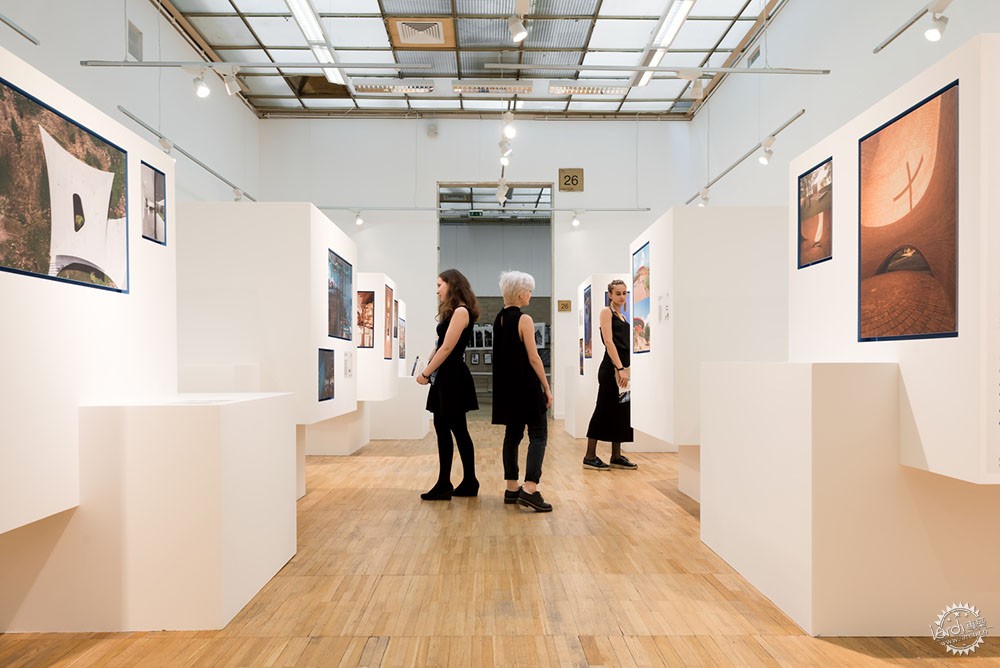
© Ilya Ivanov
运用土豆淀粉的中密度纤维板(MDF)
上文已经提及过,甲醛的使用极具争议,长久以来,因甲醛而导致的健康问题层出不穷。但是在传统中密度纤维板(MDF)中使用的主要粘合剂是化学物质,这种物质并不能回收,所以如果在家具或建筑中运用较多的MDF材质,那么这些制品将无法得到回收,最终也只能进行垃圾填埋或者焚化。那么为了解决这一问题,莱斯特大学的研究者们则发明了一种全新的中密度纤维板,其中使用了来源于土豆淀粉的树脂,它能够完美地代替甲醛。
Medium Density Fibreboard (MDF) That Uses Potato Starch
As mentioned above, formaldehyde is a controversial material that has raised many questions over the years regarding its effects on both health and the environment. As MDF’s primary bonding adhesive uses the chemical, it cannot be recycled and the huge amount of MDF used in shop displays and furniture ends up in either landfill or the incinerator. To tackle the problem, new forms of medium density fibreboard have been studied by the University of Leicester that substitute the formaldehyde with a resin derived from potato starch.
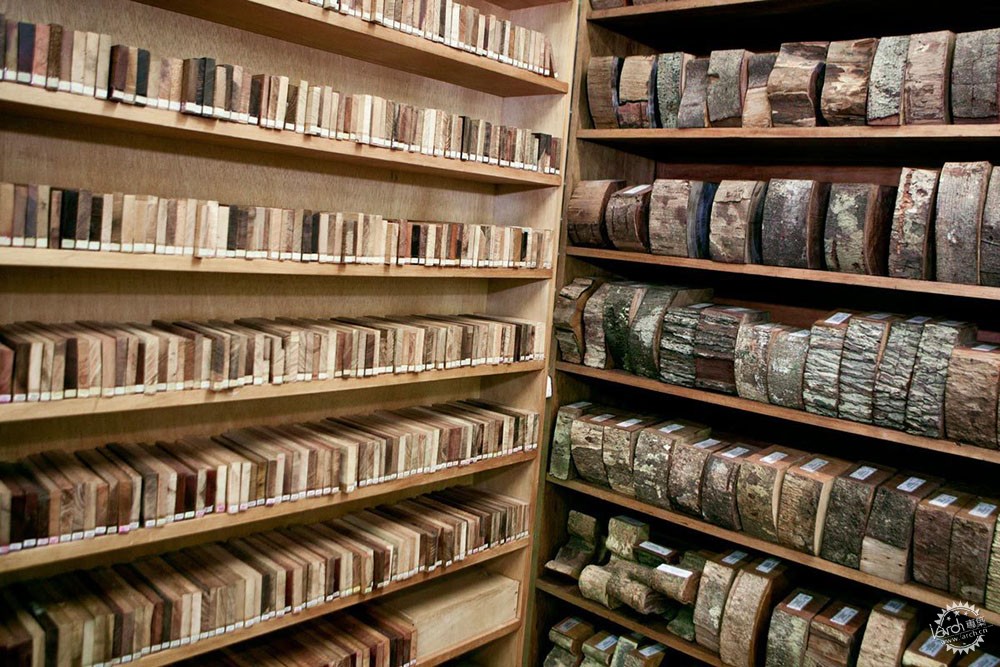
Courtesy of FSC Denmark
木材
这种材质也许无法给你更多启发,因为木材的来源有限,但木材确实能够进行生物降解,同时也是可再生材料。然而,在运用于建筑之中时,木材需要经过分解,当建筑拆除之后,填埋之前,木材也需要经过特殊处理,但这个过程并非必要。
Timber
It may not be a complete revelation to you, but timber is of course biodegradable and a renewable material as long as it is sourced sustainably. However, when used in construction, the timber treatment must be factored in, as much of it can end up as "special waste" that requires extra treatment before heading to landfill—an unnecessary process that can be prevented.
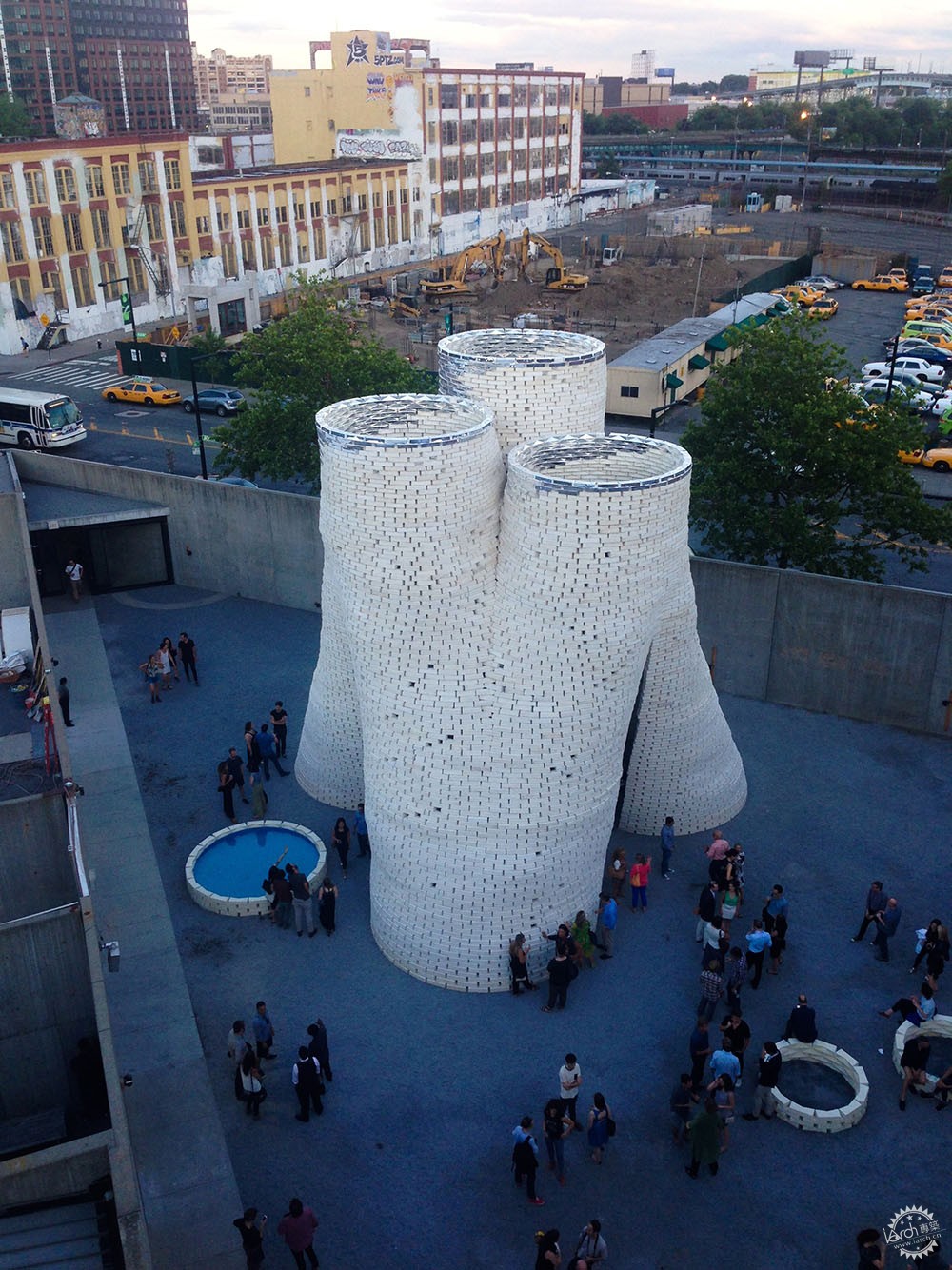
© Cecil Barnes V
菌丝体
近期,关于一些奇特材质的研究愈发多了起来,菌丝的运用也逐渐普遍,但其使用范围仍然仅限于一些临时展馆与装置。菌丝是真菌的营养成分,由成千上万孢子产生的组织纤维组成,经过干燥之,它会成为一种非常强大的材料。真菌可以通过霉菌与农业废物结合而成,然后将其用于制造有机砖,这种材质在使用之后能够进行很好的分解,从而回归碳循环。
Mycelium
Following recent projects that have explored the wonders of this curious material, mycelium has risen in popularity, although its use is so far still limited to temporary pavilions or installations. Mycelium is the vegetative part of the fungus, made up of hundreds of interwoven fibers produced by the spores which makes it an incredibly strong material when dried. If combined with farm waste in molds, the fungus culture forms organic bricks that can be used in construction that afterward decompose and return to the carbon cycle.
出处:本文译自www.archdaily.com/,转载请注明出处。
|
|
